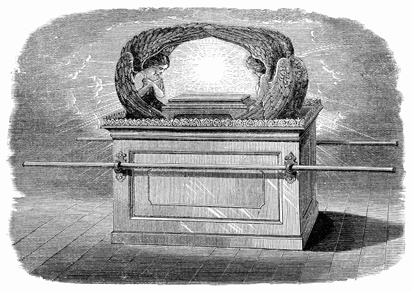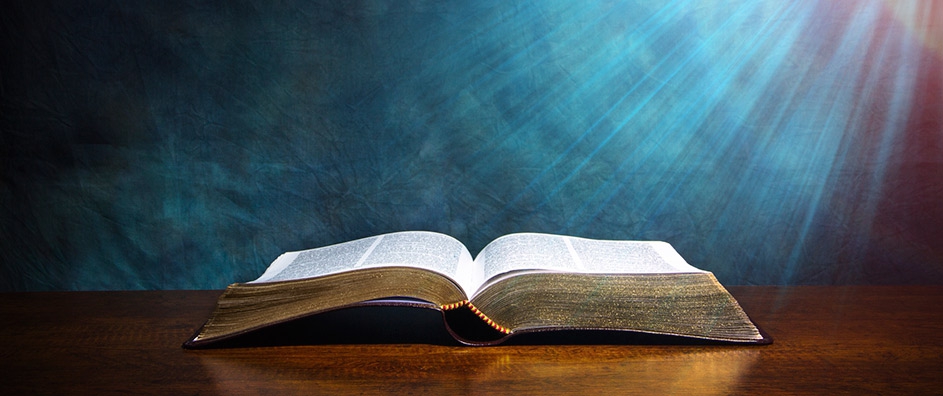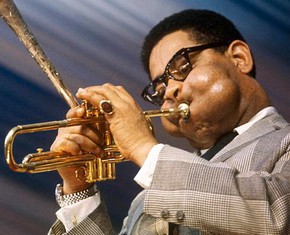The views expressed in our content reflect individual perspectives and do not represent the authoritative views of the Baha'i Faith.
Maybe you’ve seen the Steven Spielberg film Raiders of the Lost Ark, where Indiana Jones spends a few rollicking, action-filled hours chasing down the Ark of the Covenant.
In Raiders, the cinematic Ark that Indiana Jones pursues has a long history of veneration and concealment, and possesses remarkable powers because of its ancient religious origins. Everyone in the film wants to possess it, and that competitive pursuit drives the relentless action of the movie.
Spielberg didn’t just invent The Ark of the Covenant to move his plot along, though—he appropriated a real legend that has deep resonance throughout religious and cultural history. The actual Ark of the Covenant appears in the holy scriptures of many different Faiths, and traces a consistent course through all the Abrahamic religions. The Book of Exodus in the Old Testament identifies the Ark of the Covenant as the chest constructed to hold the two stone tablets revealed to Moses as the Ten Commandments:
And He gave unto Moses, when He had made an end of speaking with him upon mount Sinai, the two tables of the testimony, tables of stone, written with the finger of God. – Exodus 31:18.
Those two stone “tables” (tablets to us) and the gold-plated wooden chest that held them play major roles in the Old Testament, the New Testament and the Qur’an. In the Book of Exodus, God commands Moses to build an Ark to hold God’s law, and the Ark then makes powerful miracles happen, parting the Jordan River and helping to knock down the walls of Jericho. The detailed description in Exodus tells us exactly what the Ark of the Covenant looks like—its precise measurements, its gold plating, its two cherubs adorning a gold kapporet or cover, which Christians call the Mercy Seat. Kept in the Holy of Holies, the inner sanctum of the ancient Temple of Jerusalem, the Ark served as the physical representation of God’s law and the divine agreement between the Creator and His creation.
 Historians and theologians have debated the physical reality of the Ark of the Covenant for thousands of years, and hundreds of books exist on the subject. Did Moses actually engrave two stone tablets with the Ten Commandments as he received them from God, and then store them in a real golden box?
Historians and theologians have debated the physical reality of the Ark of the Covenant for thousands of years, and hundreds of books exist on the subject. Did Moses actually engrave two stone tablets with the Ten Commandments as he received them from God, and then store them in a real golden box?
Many religious sects and denominations take this Biblical story literally. That literal interpretation has produced dozens of claims and theories about the present-day whereabouts of the lost Ark, including Mount Nebo near the Jordan River, King Tut’s tomb in Egypt, in a cave in the Dumghe mountains in Southern Africa, under the Temple Mount in Jerusalem, hidden in Chartres Cathedral in France, buried in a hill in Ireland, or secreted away near the Abyssinian Christian Church of Our Lady of Mount Zion in Axum, Ethiopia. (Nobody seems to have found the Ark, though, except Indiana Jones.)
Others see the Ark of the Covenant as purely and powerfully symbolic, signifying God’s presence among and promise to the Hebrews. Because the Biblical stories say the followers of Moses carried the Ark during their forty years of wandering in the desert and their deliverance from bondage, it came to represent the “receptacle” of God’s promise, His mutually-binding sacred covenant with the Children of Israel. That primal contract essentially says that God will continue to guide His children, as long as they follow his commandments and “not have other gods apart from Me.”
But regardless of its actual or allegorical existence, the Ark of the Covenant stands for one profound and eternal contract in all religious teaching—the everlasting continuance of God’s guidance for humanity:
…it is a basic principle of the Law of God that in every Prophetic Mission, He entereth into a Covenant with all believers — a Covenant that endureth until the end of that Mission, until the promised day when the Personage stipulated at the outset of the Mission is made manifest. Consider Moses, He Who conversed with God. Verily, upon Mount Sinai, Moses entered into a Covenant regarding the Messiah, with all those souls who would live in the day of the Messiah. And those souls, although they appeared many centuries after Moses, were nevertheless — so far as the Covenant, which is outside time, was concerned — present there with Moses. – Abdu’l-Baha, Selections from the Writings of Abdu’l-Baha, p. 207.
This mystical principle—that every human being has an opportunity to enter into a covenant with God—exists in the Baha’i teachings, too. In fact, Baha’is believe in two kinds of religious covenants:
There is … the Greater Covenant which every Manifestation of God makes with His followers, promising that in the fullness of time a new Manifestation will be sent, and taking from them the undertaking to accept Him when this occurs. There is also the Lesser Covenant that a Manifestation of God makes with His followers that they will accept His appointed successor after Him. If they do so, the Faith can remain united and pure. If not, the Faith becomes divided and its force spent. – The Universal House of Justice, Messages 1963 to 1986, p. 737.
So how do you find the Ark of the Covenant? The Baha’i teachings say that each of the prophets, messengers and manifestations of God bring that covenant with them, to reassure their followers that God will not leave them and their descendants bereft of guidance now or in the future:
The Lord of the universe hath never raised up a prophet nor hath He sent down a Book unless He hath established His covenant with all men, calling for their acceptance of the next Revelation and of the next Book; inasmuch as the outpourings of His bounty are ceaseless and without limit. – The Bab, Selections from the Writings of the Bab, p. 87.
This reassurance, renewed in every revelation, gives us a continuous sequence of spiritual covenants throughout history. The prophetic, Old Testament covenants of Noah, Abraham, Moses, Aaron and David all promise lasting divine guidance and blessings in exchange for the faithfulness of the people. They also promise the coming of the Messiah, and the Kingdom of God on Earth.
















Comments
Sign in or create an account
Continue with Googleor